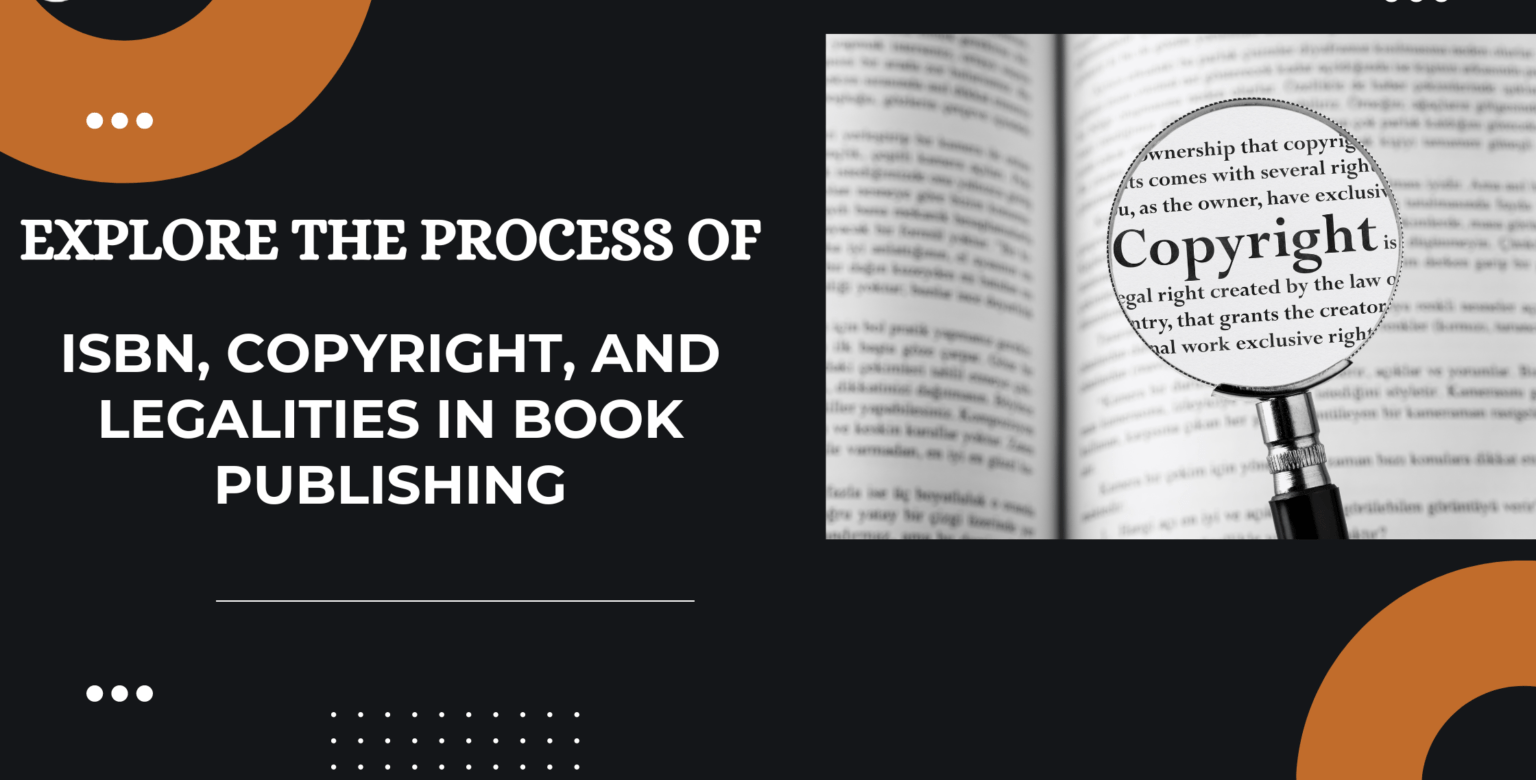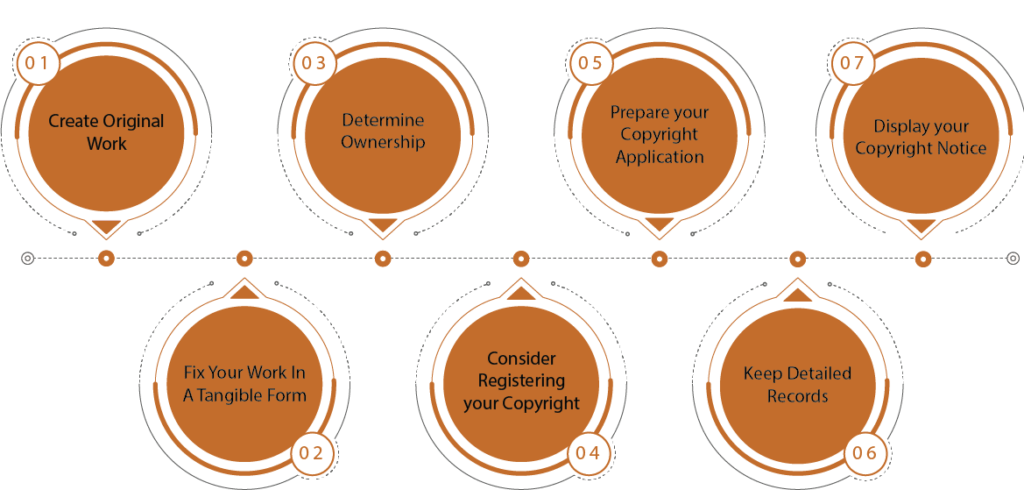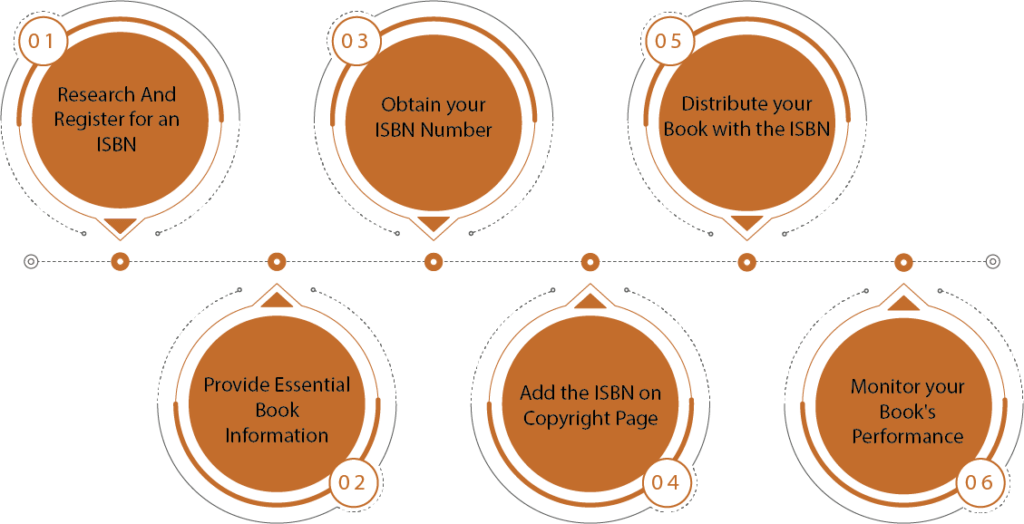- Blog
Explore the Process of ISBN, Copyright, and Legalities in Book Publishing

Have you finished writing your first book and are all set to start printing copies of it? But before rushing to production, there are a few important paperwork things to think about.
- Copyrighting a book before publishing
- Book publishing ISBN number
- Legal issues in book publishing
- Legally use licensed characters in book publishing
What is that all about, you say? Well, as an aspiring author, it’s important to protect your creative work and ensure that you retain the rights to your intellectual property.
You must be thinking about how to copyright my book.
And for that, you need to be familiar with all these, along with “how to copyright a book before publishing?”
Fret not, although it’s not a piece of cake, but it’s also not that hard; you just need to know how it’s done and when. And we’ll tell you all that.
In this comprehensive guide, we have simplified the process of copyrighting a book and provided you with all the necessary information to safeguard your work.
But before you know, “How to publish a book with an ISBN number?”, you will need to know “What is ISBN in book publishing?”
Let’s start with the basics to make it as smooth as it could be for aspiring new authors.
First things first, let’s address the question that often comes up:
What Is Copyright?
It is a legal protection that is granted to the author of an original work, giving them exclusive rights to reproduce, distribute, and display their work. It prevents others from using or copying your content without permission.
Why Do You Need It for Your Work?
- Copyright protection provides you with legal recourse in case of infringement.
- It also gives you the power to take legal action against anyone who uses your work without permission.
- It establishes your ownership and serves as a deterrent to potential infringers.
Register For Copyright and Protect Your Book Publishing Copyrights:
While copyright protection is automatically applied after the creation of work, registering your work ahead of the creation with the copyright office will provide you additional benefits.
Check your nearby copyright office for specific registration requirements, or reach out to us to get it done from the comfort of your sofa.
What is an ISBN for a book?
An ISBN (International Standard Book Number) or book publishing ISBN number is a unique identifier for your book, which helps with tracking and marketing. It’s like a social security number for your book. Registering for an ISBN is an essential step in the book publishing process. Stores need this code to keep track of sales.
- You can obtain it through your country’s ISBN agency, or you can always take our experts’ advice, and we will make sure to make this journey a breeze for you.
What Are Other Possible Legal Issues in Book Publishing?
When you’re getting a book together, there are a few legal things to keep in mind. It’s crucial to be aware of all those potentials in book publishing. Some common legal issues that can come up in book publishing are:
1. Copyright infringement
Copyright is extensive – you want to make sure anything you use from other sources is done aboveboard. That includes other people’s words, ideas, images, and pretty much anything. Make sure you have the rights to any content or ideas used in your book. This includes protecting your work from being copied.
2. Plagiarism
Plagiarism is something to watch out for, too – don’t copy someone else’s stuff and pretend it’s your own. Otherwise, you will get into serious trouble.
3. Libel/defamation
Fact-checking is also important since including false claims about people or companies could get you in hot water for libel or defamation. Requires careful fact-checking and legal review.
4. Rights and permissions
If quoting or featuring other copyrighted works, then there are permissions. If you want to directly quote from or feature something copyrighted works, images, etc., you’ll need to obtain the proper licenses and permissions.
5. Contract disputes
Even technical stuff like contracts requires scrutiny. Make sure any deals you sign with publishers don’t come back to bite you later on. And, of course, know your local laws regarding what’s appropriate content-wise.
6. Privacy/publicity rights
Using real names, stories, or images of people requires their prior approval to avoid invasion of privacy lawsuits.
7. Obscenity/indecency
Some countries restrict certain sexual/offensive content on moral grounds via censorship laws.
It’s all about covering your bases legally. A good idea is to have a lawyer take a look at it sometimes. It’s better to address any hiccups upfront than risk problems down the line, you know? This includes making sure to properly register “how to copyright a book before publishing.” Just aim to understand the basics, get permission in writing, and you should be all set.
How to Legally Use Licensed Characters in Book Publishing?
If you plan to incorporate licensed characters in your book, you need to:
- Obtain explicit written permission from the rightsholder. Major brands will have strict licensing departments that control usage.
- Make sure the license agreement specifies what use rights you are acquiring (print book, ebook, audiobook, etc.), territories, and duration. Narrow scopes can limit your opportunities.
- Pay any applicable licensing fees upfront as negotiated. Rates vary but can be expensive for top properties.
- Use the character/IP only within the guidelines stipulated, such as maintaining accurate tone and traits. Significant changes may void the deal.
- Credit the property appropriately in publicity materials. Know how the rightsholder wants to be acknowledged.
- Carry the appropriate copyright/trademark notices where mandated. This protects both parties legally.
- Anticipate approvals for marketing usage of the character’s image and name. Extra permissions are often required.
- Consult an entertainment attorney who is well-versed in licensing agreements to review all paperwork and represent your interests.
- Maintain solid communication and paperwork filing to demonstrate responsible custodianship of the licensed 3rd party IP.
With clear permissions and adherence to deal points, licensing beloved characters can boost audience engagement when done correctly.
Now, let’s dive into the steps you need to take to copyright your book before publishing:
How to Copyright Your Book Before Publishing – Step-by-Step Guide

It’s easier than you might think, let’s get started:
Step 1: Create Original Work
First things first, your book needs to be original. That means it can’t be a copycat of someone else’s work. Copyright protection only applies to original creations, so make sure your book is unique and reflects your voice.
Step 2: Fix Your Work in a Tangible Form
Once you’ve got your original masterpiece, it’s time to fix it in a tangible form. That means writing it down, saving it as a digital file, or recording it. This step is essential because copyright protection kicks in as soon as your work is fixed in a tangible form.
Step 3: Determine Ownership
Who will own the copyright to your book? In most cases, it’s automatically owned by the author (that’s you!). But if you’re working with a publisher or collaborating with others, ownership might be shared or transferred. Make sure you clarify this in writing to avoid any confusion later on.
Step 4: Consider Registering Your Copyright
While copyright protection is automatic, you can enhance your legal benefits by registering your copyright. This step is optional but highly recommended. Registering creates a public record of your ownership. You are eligible to take legal action if someone infringes on your rights. Check with your country’s copyright office for the specific requirements.
Step 5: Prepare Your Copyright Application
If you decide to go ahead with copyright registration, you’ll need to prepare a copyright application. Don’t worry; it’s more manageable than it sounds! Fill out the necessary form, pay the required fee, and submit a copy of your work. Just follow the instructions provided by the copyright office, and you’ll be on your way.
Step 6: Keep Detailed Recordss:
It’s essential to keep track of all the steps you’ve taken to copyright your book. Save your drafts, revisions, correspondence, and any copyright registration information. These records will come in handy if you ever need to prove your ownership or resolve any copyright disputes.
Step 7: Display Your Copyright Notice
Consider adding a copyright notice to your book. It’s not mandatory, but it can provide an extra layer of protection. A simple copyright notice includes the copyright symbol (©), the year of first publication, and your name as the copyright owner. It tells readers and potential infringers that your work is protected.
Follow these steps to protect your work and navigate the legalities of book publishing. Copyright is your ally; safeguard your creativity, get peace of mind, and share your stories with the world.
Remember, if you have any doubts or questions, consult an intellectual property attorney or copyright expert for guidance.
So, as you make a point in knowing “how to copyright a book before publishing,” for your book’s protection, you must also be aware of “how to publish a book with an ISBN number.”
How to Publish a Book with an ISBN Number?
Now, it’s time to take the exciting step of publishing it with an ISBN number. It’s a crucial step that will help your book reach a wider audience and establish its presence in the publishing world.

Step 1: Research and Register for an ISBN
Now that you know the significance of an ISBN number, it’s time to research how to obtain one. Each country has its own ISBN agency responsible for issuing ISBNs. Find the agency in your country and follow their guidelines for obtaining an ISBN of a book. Typically, you’ll need to register as a publisher or author and provide information about your book.
Step 2: Provide Essential Book Information
During the registration process, you’ll need to provide essential information about your book. This includes:
- The book’s title
- Author’s name
- Edition number,
- Format (e.g., paperback, ebook)
- Language
- Publication date
Be accurate and thorough, as this information will be associated with your ISBN.
Step 3: Obtain Your ISBN Number
Once you’ve completed the registration process and provided the necessary information, you’ll receive your unique ISBN number. This number will be linked to your book and will be used by retailers, distributors, and libraries for identification and ordering purposes. Please keep this number safe and make a note of it for future use.
Step 4: Add the ISBN to Your Book's Copyright Page
Now that you have your ISBN number, it’s time to add it to your book. Create a copyright page (typically found at the beginning of your book) and include your ISBN along with other important details like copyright notice, publisher information, and printing history. This will ensure that your book is correctly identified and tracked by readers and industry professionals.
Step 5: Distribute Your Book with the ISBN
With your ISBN number prominently displayed in your book, it’s time to distribute it to various platforms. Self-publish it or go the traditional publishing way; make sure that your book is listed with retailers, online platforms, libraries, and distributors. Your ISBN will enable these channels to identify and sell your book to potential readers accurately.
Step 6: Track and Monitor Your Book's Performance
One of the advantages of having a book ISBN number is the ability to track and monitor your book’s performance. Many ISBN agencies provide author portals or online systems where you can access sales data, track royalties, and monitor the reach of your book. This information will help you make informed decisions and plan future marketing strategies.
All in all:
Publishing your book with an ISBN number is a significant step in your author journey. It not only gives your book a unique identity but also opens doors to broader distribution and increased visibility. By following these steps, you’ll ensure that your book is correctly registered with an ISBN and set up for success in the publishing world.
Remember to get barcodes too!
Every book sold somewhere needs a unique printed barcode on a book back cover or last page. This is how it links to your ISBN in the system.
Final words:
In conclusion, copyrighting your book before publishing is a vital step for any author. A lot of creators get so focused on the writing that these logistical details slip the mind. But taking time NOW to;
- Know how to copyright a book before publishing
- Filing copyright
- Applying for an ISBN
- And prepare barcodes
It will save you significant headaches later if you are trying to distribute in stores and online. It’s good to have all that business stuff in order before production kicks off. It ensures that you have the legal protection and rights necessary to safeguard your creative work. Lastly, remember;
- To obtain an ISBN number
- Navigate legal issues
- And seek permission from licensed characters to avoid any legal complications.
So you can publish your book confidently. Let us know if any part of the process seems like it needs to be more precise.

We are an expert ghostwriting team that takes your imagination, adds a thing or two, and turns it into a successful book.